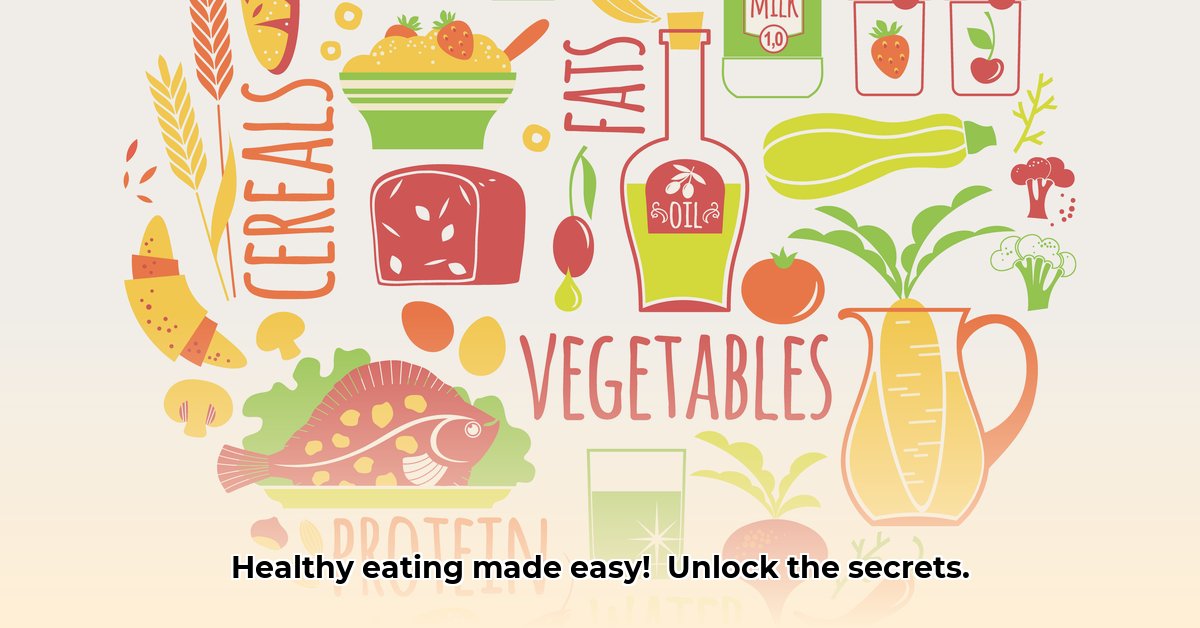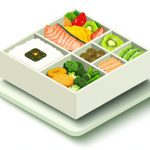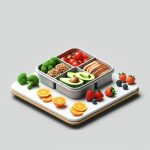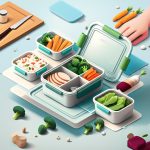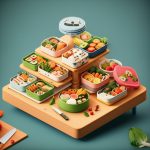Want to create impactful healthy eating campaigns that truly resonate? Visuals are paramount! Discover how to leverage readily available clipart to craft engaging and effective promotions for healthy choices. This comprehensive guide equips you with the tools to select the best images, seamlessly integrate them across diverse media, maintain a clear and consistent message, and meticulously measure campaign performance. Whether you’re a health professional, educator, community leader, or passionate advocate, this guide will empower you to inspire widespread adoption of healthier eating habits through compelling and visually stimulating content. For a helpful shopping list, check out this handy resource.
Healthy Eating Clipart: A Visual Powerhouse for Better Campaigns
Pictures often communicate more effectively than words, particularly when encouraging positive changes in eating habits. The strategic implementation of healthy eating clipart serves as a potent tool for launching engaging and effective campaigns. This guide delivers a practical roadmap for maximizing its potential and achieving significant results.
Choosing the Right Healthy Eating Clipart: Diversity, Realism, and Relevance
Selecting appropriate clipart is the foundational step for campaign success. Prioritize vibrant, appealing, and relatable images that reflect diversity and showcase realistic portrayals of food.
Key Considerations:
- Diversity and Inclusion: Represent a broad spectrum of individuals enjoying healthy foods. Encompass various ages, ethnicities, body types, and abilities to foster inclusivity and maximize appeal. Actively avoid perpetuating harmful stereotypes.
- Realistic Food: Showcase fresh fruits, vegetables, and other healthy options in an appetizing and accessible manner. Avoid overly stylized or idealized depictions to make healthy eating appear desirable, attainable, and relevant to everyday life.
- Alignment with Your Message: Ensure the clipart directly reinforces the key messages of your campaign. The visuals should complement and amplify the main points without causing distractions or confusion.
- Avoiding Stereotypes: Be acutely aware of unintentional stereotypes that your visual choices could convey. Scrutinize images for subtle biases and ensure they promote positive and inclusive representations of healthy eating.
- Cultural Sensitivity: Consider the cultural backgrounds of your target audience and select clipart that is culturally appropriate and respectful. Avoid imagery that could be offensive or alienating to certain groups.
Examples:
- Good: A diverse group of friends of varying ages laughing while preparing a colorful salad together in a home kitchen.
- Bad: A single, exceptionally thin person consuming a single, perfectly shaped piece of fruit in an unrealistic, overly formal setting.
A Simple Checklist:
| Criteria | Yes/No | Notes |
|---|---|---|
| Diverse Representation? | Consider age, ethnicity, body type, abilities, and cultural backgrounds. | |
| Realistic Food Depictions? | Does the food look appetizing, accessible, and representative of real-world options? | |
| Stereotype-Free? | Does the image avoid perpetuating harmful stereotypes related to body image, ethnicity, or socioeconomic status? | |
| Campaign Message Alignment? | Does the clipart directly and effectively support your campaign’s overarching message and goals? | |
| Cultural Sensitivity? | Is the imagery culturally appropriate and respectful of diverse audiences? |
Integrating Healthy Eating Clipart Across Your Media: Maximizing Reach and Impact
Amplify the impact of your carefully selected clipart by strategically deploying it across a wide array of platforms, ensuring your healthy eating message resonates far and wide.
Application Channels:
- Websites: Enhance visual appeal and improve user engagement by strategically integrating clipart. Use it to break up dense text blocks, highlight key information, and create a more inviting and interactive online experience.
- Social Media: Supercharge the shareability and memorability of your social media posts with eye-catching clipart. Optimize images for each platform to ensure maximum visual impact and engagement.
- Educational Materials: Captivate audiences, particularly children, by incorporating clipart into handouts, worksheets, presentations, and posters. Make learning fun, interactive, and visually stimulating to enhance knowledge retention.
- Presentations: Elevate presentations from mundane to memorable by incorporating relevant and engaging clipart. Create visually compelling slides that transcend conventional text-heavy formats and leave a lasting impression.
- Email Newsletters: Infuse visual flair and boost engagement by adding eye-catching clipart to email newsletters. Transform static content into dynamic, visually appealing communications that capture attention and drive action.
- Print Materials: Incorporate high-resolution clipart into brochures, flyers, posters, and other print materials to enhance visual appeal and effectively communicate your healthy eating message to a broader audience.
- Mobile Apps: Utilize relevant clipart within mobile apps dedicated to nutrition, cooking, or wellness. This can help improve user engagement and provide a more visually appealing and interactive experience.
Creating a Cohesive Visual Narrative: Building Brand Recognition and Trust
Establish a strong and recognizable brand identity by consistently utilizing a cohesive style and color palette in your clipart choices. This consistency ensures easy association of your campaign with healthy eating and fosters trust among your target audience.
Elements of a Cohesive Brand:
- Color Palette: Select a visually appealing and consistent color palette that reflects the overall tone and message of your campaign. Colors can evoke specific emotions and associations, so choose wisely to enhance aesthetic appeal and message conveyance.
- Font Selection: Choose easily readable fonts that complement the clipart style and overall design. Avoid distracting or overly stylized typefaces to ensure optimal clarity and visual harmony.
- Overall Design: Maintain consistent layout and spacing throughout all materials, reinforcing a unified brand identity that promotes recognition and impact. Develop a style guide to ensure consistency across all platforms and materials.
Measuring the Impact of Your Healthy Eating Clipart: Data-Driven Optimization
Assess the effectiveness of your campaigns by meticulously tracking audience engagement and response to your clipart choices. Utilize a variety of methods to gather data and refine your strategy for optimal results.
- A/B Testing: Conduct A/B tests on different versions of your materials with varying clipart options. Analyze which versions garner the most attention, engagement, and desired actions from your audience to optimize future campaigns.
- Surveys: Gather direct audience feedback on your materials and identify the most effective and appealing images. Use surveys to gain valuable insights into audience preferences, perceptions, and emotional responses to your visual content.
- Website Analytics: Monitor key metrics such as click-through rates, time spent on pages featuring specific images, and conversion rates. These data-driven insights provide valuable feedback on the effectiveness of your visual strategy and identify areas for improvement.
- Social Media Analytics: Track engagement metrics such as likes, shares, comments, and reach to assess the performance of your social media posts featuring clipart. Use these insights to optimize your content strategy and maximize audience engagement.
- Focus Groups: Conduct focus groups to gather qualitative feedback on your clipart choices and overall campaign messaging. This allows you to gain a deeper understanding of audience perspectives and identify potential areas for improvement.
Adapting your approach based on data and feedback is crucial for continuous improvement and maximizing the impact of your future campaigns.
Resources and Further Exploration: Expanding Your Knowledge and Toolkit
Explore publicly available resources and engage with reputable organizations to enhance your campaign creation process. Stay informed about the latest research and best practices in visual communication and health promotion to ensure the effectiveness of your efforts. Continuous learning and refinement are essential for success.
- Public Health Organizations: Consult resources and guidelines from organizations like the World Health Organization (WHO) and the Centers for Disease Control and Prevention (CDC).
- Nutrition and Dietetics Resources: Refer to professional organizations like the Academy of Nutrition and Dietetics for evidence-based information and best practices in nutrition education.
- Design and Communication Resources: Explore resources from design and communication organizations to learn about effective visual communication principles and techniques.
- Online Libraries: Utilize online libraries like the National Institutes of Health (NIH) and the National Library of Medicine (NLM) to access research articles and publications related to health communication and visual design.
- Creative Commons: Use images with creative commons licenses.
Designing Impactful Fruit and Vegetable Consumption Campaigns
Key Takeaways:
- Visuals are essential for effective health communication.
- Clipart offers cost-effective and accessible ways to create engaging campaigns.
- Selection of culturally appropriate clipart is crucial.
- Measuring campaign impact through A/B testing and surveys helps refine future efforts.
- Accessibility is important to all visuals.
Choosing Appropriate Clipart: Authenticity Over Artificiality
Effective clipart in healthy eating campaigns requires images that resonate with the target audience, prioritizing authenticity over artificial perfection.
Example Table: Exemplary vs. Deficient Clipart Selections
| Exemplary Selection | Deficient Selection | Rationale |
|---|---|---|
| Diverse individuals enjoying a fresh salad | Single, thin person eating a perfect apple | Promotes inclusivity by representing diverse populations; avoids unrealistic perfection. |
| Slightly imperfect, realistic produce | Perfect, airbrushed fruit and vegetables | Emphasizes authenticity by showcasing real food, accepting imperfections. |
| Family preparing a meal together | Individual eating alone | Reinforces the social aspect of eating and promotes family engagement. |
| Locally sourced produce | Generic, unidentifiable fruits and vegetables | Highlights the importance of supporting local farmers and consuming seasonal foods. |
Strategic Clipart Placement for Enhanced Engagement
Effective use of clipart involves strategic placement across digital platforms and physical materials
- The Best Bento Box Price For Your Perfect Packed Lunch - December 15, 2025
- Bento Box Shopping Tips for Smart and Stylish Lunch Prep - December 14, 2025
- Bento Box Trays Streamline Restaurant Meal Presentation and Transport - December 13, 2025
